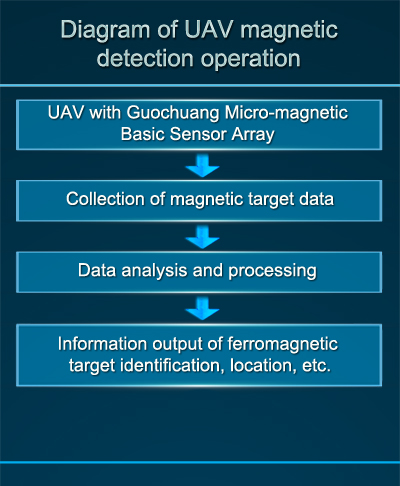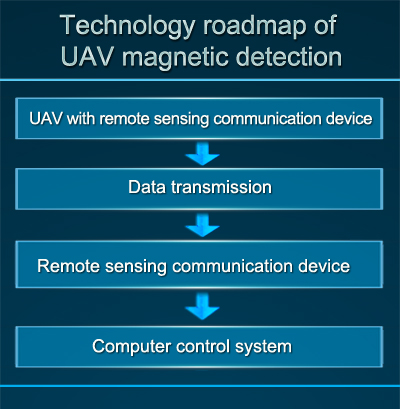![]() Background analysis:
Background analysis:
Aeromagnetic exploration is a cutting-edge technology related to geophysical survey technology and aviation technology. Manned aerial magnetic exploration accidents occur from time to time which can lead to plane crashes and deaths in serious cases. In October 2018, a helicopter used for magnetic exploration crashed in Jinhua, Zhejiang. At that time, the helicopter was carrying out an aerial geophysical prospecting project. The accident claimed the lives of two pilots on board. With the continuous improvement of technology, UAV magnetic prospecting came into being. In November 2016, the "UAV-based aerial geophysical survey (electric/magnetic/radio) integrated station measurement technology research and development and application demonstration" project led by the China Geological Survey and Geochemical Survey passed the acceptance test, which marked the successful development of China's practical UAV aerial geophysical (magnetic/radio) integrated survey system and filled the technical gap in this field in China. In the future, unmanned, miniaturized, and intelligent are the general trends of aerial magnetic detection. UAV magnetic detection prospecting has the characteristics of high integration, small volume, light weight, low power consumption, high system accuracy, stability, good reliability, and can hover at any time. As an emerging aviation geophysical technology, UAV magnetic detection, especially rotor UAV aeromagnetic system, has the advantages of low-altitude aeromagnetic surveying in areas that are difficult for ground personnel to reach. It also has broad application prospects in geological survey and environmental monitoring. It is not only suitable for oceans, plains, deserts, and low-mountainous areas, but can also carry out aeromagnetic surveys in high-altitude areas, conduct geological prospecting, and provide new prospecting technology and equipment for geological surveys.
![]() Mission:
Mission:
UAVs are used to carry Guochuang Magnetic Anomaly Detection System to detect and collect magnetic anomaly signals, thereby providing important information for aeromagnetic detection, iron ore, petroleum, geological prospecting and environmental monitoring, and underwater magnetic target detection.
![]() Task:
Task:
Magnetic anomaly detection system which is composed of Guochuang Micro-magnetic Basic Sensor Array carried by UAV can detect and collect the magnetic anomaly signals in the ocean. After the model construction and algorithm, the magnetic anomaly information corresponding to the ferromagnetic targets such as sunken ships, iron and underwater archaeology, etc. can be reversed, and the type, location, shape, size and other important information of ferromagnetic targets can be determined. Once a magnetic anomaly signal is found, an early warning message will be sent and transmitted to the control terminal.
![]() Principle:
Principle:
The magnetic anomaly target contains materials with ferromagnetic characteristics (such as iron, cobalt, nickel, etc.), and the magnetic field strength is inversely proportional to the target distance cube, H∝M/R3. We use Guochuang Micro-magnetic Basic Sensor Array to detect the magnetic anomaly information caused by the ferromagnetic target, and determine whether there is ferromagnetic target according to the corresponding model algorithm.
![]() Design solution:
Design solution:
The UAV magnetic detection system is mainly composed of Guochuang Micro-magnetic Basic Sensor Array as the key core equipment, and relevant position, speed and course information can be obtained by using relevant target recognition and positioning algorithms.


![]() The main components of the system:
The main components of the system:
1. The UAV magnetic detection system is composed of micro-magnetic basic sensor array, communication module, digital signal unit, etc.;
2. The micro-magnetic basic sensor array is installed on the UAV pod;
3. Related algorithms include: micro-magnetic basic sensor array calibration, installation error calibration, carrier interference suppression, environmental noise suppression, processing of magnetic anomaly targets small signal, etc.;
4. Data center: collection of data and information such as micro-magnetic basic sensor array data and magnetic anomaly early warning positioning signals;
5. Terminal console: display the working status and early warning information of the UAV magnetic detection system.
